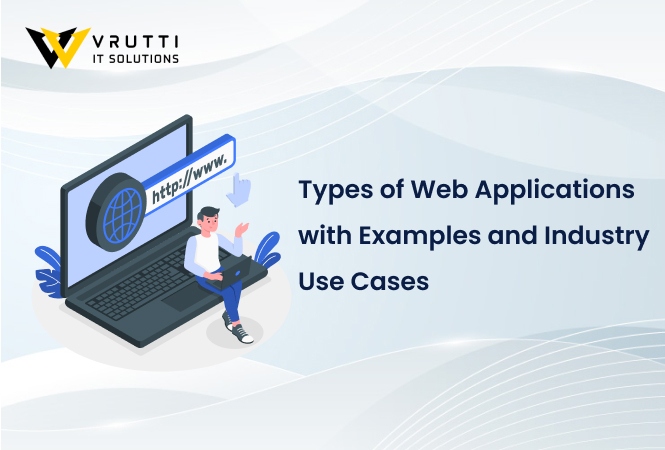Types of Web Applications with Examples and Industry Use Cases

Types of Web Applications with Examples and Industry Use Cases
In today's digital landscape, web applications are pivotal in delivering interactive and personalized experiences to users. Understanding the various types of web applications is essential for businesses and developers to choose solutions that align with their objectives. This comprehensive guide explores different types of web applications, providing examples and industry use cases for each.
1. Static Web Applications
Static web applications are the simplest form, delivering fixed content to users without interaction or dynamic content generation. Built using HTML and CSS, these applications are straightforward to develop and host.
Example:
A personal portfolio website showcasing an individual's projects, resume, and contact information without user-specific customization.
Industry Use Case:
Freelancers and professionals often use static web applications to establish an online presence, providing essential information to potential clients.
Benefits:
- Cost-effective development and hosting
- Fast loading times due to simple structure
- Enhanced security with minimal vulnerabilities
Limitations:
- Lack of user interactivity
- Requires manual updates for content changes
2. Dynamic Web Applications
Dynamic web applications generate real-time data based on user requests and server responses. They utilize client-side and server-side scripts like PHP, JavaScript, ASP, and JSP to generate content in real time, offering a more interactive user experience compared to static web apps.
Example:
Content management systems (CMS) like WordPress, where users can create, edit, and manage digital content without coding knowledge.
Industry Use Case:
News websites that display the latest articles and allow user comments rely on dynamic web applications to manage and present content effectively.
Benefits:
- Interactive and personalized user experience
- Easy content management and updates
- Scalability to handle a growing user base
Limitations:
- Complex development and maintenance
- Higher hosting costs due to server-side processing
3. Single-Page Applications (SPAs)
Single-Page Applications load a single HTML page and dynamically update content as the user interacts with the app, eliminating the need for page reloads. This approach provides a seamless and fast user experience.
Example:
Gmail, where users can navigate through emails, compose messages, and manage settings without full page reloads.
Industry Use Case:
Project management tools that offer real-time updates and interactions within a single page utilize the SPA model to enhance user productivity.
Benefits:
- Improved user experience with faster interactions
- Reduced server load due to fewer page requests
- Offline capabilities with proper caching
Limitations:
- Initial loading time may be longer
- SEO challenges due to dynamic content loading
4. Multi-Page Applications (MPAs)
Multi-Page Applications consist of multiple pages, each requiring a full reload when navigated. They are suitable for applications with extensive content and complex architectures.
Example:
E-commerce websites where users navigate through various product categories, product pages, and checkout processes, each on separate pages.
Industry Use Case:
Online marketplaces with a vast array of products and services often implement MPAs to organize content effectively.
Benefits:
- Better SEO performance due to multiple pages
- Scalability for complex applications
- Clear separation of content and functionality
Limitations:
- Slower navigation due to full page reloads
- Increased development complexity
5. Progressive Web Applications (PWAs)
Progressive Web Applications combine the best features of web and mobile applications, offering offline capabilities, push notifications, and fast load times. They provide an app-like experience within a web browser.
Example:
Starbucks' PWA allows users to browse the menu, customize orders, and add items to the cart even without an internet connection.
Industry Use Case:
Retail businesses use PWAs to enhance customer engagement by providing a seamless shopping experience across devices.
Benefits:
- Offline functionality enhances user accessibility
- Improved performance with faster load times
- Cross-platform compatibility reduces development costs
Limitations:
- Limited support on older browsers
- Access to device features may be restricted compared to native apps
6. E-commerce Web Applications
E-commerce web applications facilitate online buying and selling of products or services, incorporating features like product listings, shopping carts, and payment gateways.
Example:
Amazon's web application enables users to browse products, read reviews, and make purchases online.
Industry Use Case:
Retailers utilize e-commerce web applications to reach a broader audience and streamline the sales process.
Benefits:
- 24/7 availability increases sales opportunities
- Global reach expands customer base
- Personalized shopping experiences enhance customer satisfaction
Limitations:
- Security concerns with handling sensitive customer data
- Requires robust infrastructure to

